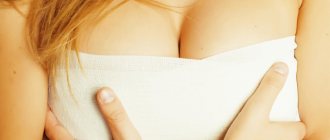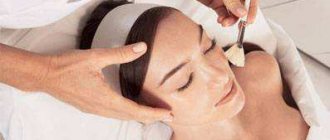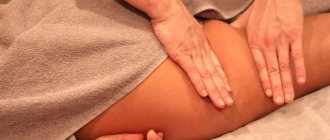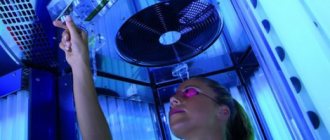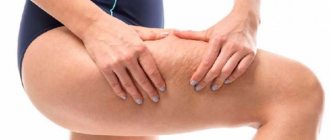Often, advertising for the contouring procedure only shows the positive aspects of the final result. In turn, experts also prefer to remain silent about possible complications after the procedure. It is for this reason that even the slightest deviation from the desired result becomes a real and unexpected blow for patients. The most common problems that appear after beauty injections include lumps and bumps.
Every patient dreams of seeing herself young and renewed immediately after an expensive session, but there are times when the gel, which has formed into lumps, swelling and redness, greatly distorts the desired picture. What is the reason for this problem and should I worry? Should I seek medical help or will it go away on its own? Many questions worry women who have decided to undergo this procedure, but it is worth noting that all lumps and other skin reactions often have a different nature of formation and require different ways to deal with them.
What cases are considered normal, examples
Not every woman who has undergone a correction session for the first time is ready to discover ridges and compacted bumps. It is worth considering that you should not always worry about this, namely:
- If the gel is injected to the correct depth, it can be felt with your fingers, but visually this will not be noticeable. Often, this feature is characteristic of dense types of fillers. Over time, the lumps will noticeably soften and smooth out.
- Do not forget that for a couple of hours or even a day after the contouring injection, the drug continues to dissolve in the tissues. Therefore, there are a lot of rules and post-procedural restrictions. It is worth noting that control over this process is possible with the help of proper massage, which will proportionally distribute the filler. Experts do not recommend doing it yourself; it is better to seek help from professionals. Only they know the amount of pressure allowed on the area treated with injections. You need to use the services of a cosmetologist who himself administered this injection.
Is rehabilitation needed?
A rehabilitation period is needed for any intervention in the human body, the only difference is the duration of this process. When introducing hyaluronic acid, this period ranges from 7 to 14 days.
During rehabilitation, you must follow the recommendations of the cosmetologist.:
do not be in the sun;- do not visit baths and saunas;
- do not drink alcohol;
- do not use decorative and skincare cosmetics that can have an aggressive effect on the skin;
- Do not take antidepressants or other blood thinning medications.
If you follow the above rules, many complications can be avoided and you can get maximum pleasure from the result of the procedure.
More details about what can and cannot be done after fillers and in what cases they should not be injected can be found in this material, as well as more information about whether it is possible to drink alcohol on the day of filler injection and after the procedure can be found here .
Methods for determining correct and incorrect filler injection
Everything is quite banal, since you need to go to the mirror, and, looking at yourself, answer some questions, namely:
- Are gel accumulations visible under the skin layer?
- Is there significant facial asymmetry?
- whether there are any unusual deformities in specific areas of the face that may have occurred due to gel migration.
If the answer is yes to at least one of the questions, it is important not to hesitate to visit the doctor. There is no need to start panicking, since asymmetry can be caused by normal swelling due to the injection.
Is there a possible complication after injections in the form of lumps?
In other cases, the occurrence of compactions is not normal and negates the entire acquired aesthetic effect of the procedure; moreover, the situation is fraught with significant health problems:
- Not deep injection of the product as an incorrectly performed injection or too much filler for a person with thin skin type. Therefore, the volumes of gel near the surface of the skin will be traced visually. They can be visible on the surface as an oval formation in blue or gray shades, the so-called Tyndall effect. Under the thin skin of the lips, such a formation will resemble a capsule filled with liquid. There are only 2 options here: do nothing for 1 or 2 months and wait until the lump resolves or remove the remaining filler by injecting hyaluronidase. The second option will be much faster than the first.
- Inflammation. It can develop not only in a certain area that is subject to correction, but throughout the entire work area. Often, the main source of inflammation is considered to be living microorganisms that find themselves inside tissues through puncture and modified immune reactivity, which is typical for patients with autoimmune diseases and others. The main symptoms include redness of the skin, increased temperature of a localized area of the body, painful sensations, and the presence of lumps. Such symptoms are eliminated by taking certain antibiotics. It is worth contacting specialists immediately, since otherwise necrosis of tissues that have been infected is possible.
- Collection of blood. This complication appears after lip correction, since it is in this area that a huge number of vessels and capillaries are located. It is worth noting that the bump on the lip will be very painful and noticeable with a pronounced brown tint near the edge of the lips.
Such seals do not require treatment and are capable of self-resorption after several days. They tend to form on the lips, but not on other parts of the face, since the blood there evenly nourishes the tissues. As a result, even and extensive hematomas may occur.
- Growth of connective tissue, formation of nodules, cysts and scars. These formations are characteristic of fillers based on hyaluronic acid; its molecules are capable of stimulating fibroblasts, the so-called skin cells responsible for the formation of connective tissue fibers. We are talking about elastin and collagen. It is worth knowing that excessive stimulation can lead to the formation of accumulations of layers of connective tissue, as well as the appearance of a scar, which can not only be detected by touch, but also be visually noticeable. This may happen in a week, a month or even a few days. This is very dangerous in the area of the lips themselves, as it is fraught with possible asymmetry.
It is necessary to promptly distinguish a scar from a cyst - a so-called cavity formation that fills with fluid. Diagnosis can only be made using ultrasound. The treatment method in the two mentioned situations has a number of differences, so timely ultrasound will help identify the problem.
Inflammation at the puncture site
Inflammation cannot be considered a side effect. Despite the complete biological compatibility of non-sulfonated glycosaminoglycan, immediately after its administration, the internal organs activate their classic protective mechanism against “external irritants”. After a few days, all biological processes are normalized, and inflammation quickly disappears. If this doesn't happen:
- During the puncture, an infection entered the body. This does not mean that the cosmetologist did something wrong; maybe the injections only “activated” the viruses that had entered the tissue a few days before the injections;
- The woman was diagnosed with autoimmune diseases, which, in response to the absorption of the cocktail, began to inflame the treated area.
These two points are diametrically opposed. In the first case, the woman must take pharmacological agents, in the second - steroids, which dampens the effect of the local immune reaction. If steroids are injected into an area with a bacterial infection, the situation will only worsen, with the likely formation of massive suppurations and further scarring. Therefore, it is extremely dangerous to self-medicate; you need to urgently make an appointment with a specialist for qualified advice.
A method for getting rid of compacted formations and bumps after injection of fillers
It is worth noting that contour plastic surgery is no longer a new vector in cosmetology, which is why there are developments regarding the correct technique for administering drugs, as well as in the timely elimination of unsatisfactory results.
It is worth considering them in more detail:
Strict adherence to restrictions and rules of facial skin care during the rehabilitation period. You should forget about your own habits, slow down your normal pace of life and come for appointments with your cosmetologist only for 1 or 2 weeks after the procedure (injections). There are no difficulties in this compared to the possible difficulties that may arise with the appearance of lumps or other complications.
Additional injections of additional volumes of gel to correct the formed hardening. At this stage, this is one of the most popular correction methods, which only veils the acquired complication for a short time, but can also have the opposite effect from the expected one.
It is worth carrying out additional injection of fillers, the so-called “finishing”, only after detecting facial asymmetry from the first injection of the drug.
Perhaps it was not enough and it is worth replenishing the filler to form the required volume. It happens that additional injection is not able to veil the defect; moreover, it makes the defect even more noticeable. The drug, which is injected repeatedly, literally pushes the lump to the surface, increasing the likelihood of the formation of lumps from the layers of connective tissue.
Even when it is possible to successfully disguise existing problems, there is no guarantee that they will reappear and will need new correction. Scarring is considered the most dangerous, since if time is lost, the risk of getting a completely unpredictable result and expensive treatment increases.
The introduction of products that can accelerate the destruction and removal of hyaluronic acid. The introduction of the hyaluronidase enzyme can remove HA-based filler within a few days. The main indications for use include:
- Hypercorrection (introduction of a large volume of gel, higher than normal);
- Transparency and visibility of the filler through the surface of the skin (translucency). This is due to the shallow injection of the drug into areas of thin skin;
- Infection in the tissue where the filler resides;
- Great formation of connective tissue;
- Pressure on blood vessels, which can lead to tissue necrosis (death).
Who is to blame and what to do?
The occurrence of problems after contouring is associated with two main factors. 95% of complications and side effects after fillers are due to errors in injection technique. This could be simple failure to comply with the rules of hygiene, treatment of the surgical field (insufficient cleansing of the skin before the procedure), too deep or superficial injection of filler, or exceeding the recommended volume of filler. And only 5% of complications after fillers are associated with defects in the injected material. With the vast number of fillers on the market, there are not many low-quality materials. These include illegally imported drugs or newly introduced products that have not undergone sufficient clinical trials.
Let's figure out what measures the patient can take to avoid these complications.
- Carry out the procedure only in a specialized clinic, where all septic and antiseptic rules are observed and the necessary emergency equipment is available.
- Take the time to make sure your doctor is qualified. Unfortunately, in the practice of a cosmetologist, adverse events are not so rare. And the more often, the more experience a cosmetologist has. This depends not only on the experience of the doctor, but also on the number of different patients. However, when communicating with an experienced specialist, this risk is certainly less. Besides, he knows how to deal with them.
- Pay attention to how carefully the doctor collects anamnesis during the consultation - he is interested in previous and existing diseases, and medications taken. Such a conversation allows you to avoid complications and side effects after fillers. Various autoimmune diseases can cause granulomas, and taking certain medications can lead to immunosuppression.
- When performing contour plastic surgery, only certified drugs should be used. This information must be available in the clinic. Before the procedure, their name and number must be entered into the medical record.
- Strictly follow your doctor's recommendations before and after the procedure.
Injections of antiviral enzymes and glucocorticosteroids
It is worth knowing that steroid hormones can suppress the activity of cells in the immune system itself, and also help scars and granulomas resolve. These injections are recommended for:
- The appearance of a foreign formation (filler). Often it can cause a violent reaction of the immune system, but this should not be confused with an inflammatory process due to bacterial infection.
- If hyperstimulation of fibroblasts contributed to the rapid growth of compactions in connective tissues.
- The formation of a capsule from the connective tissue itself prevents the gel from dissolving and promotes the rapid growth of granulomas.
A small dose of the drug is to be administered locally to a specific area. Often, a single injection is enough to obtain the desired result. It is no secret that these injections can also provoke complications, or rather the formation of retracted atrophic scars at the injection sites. In addition, they are practically ineffective in combating seals on the lip area.
It happens that bumps are the result of an infection, but a dishonest cosmetologist will try to refuse to admit his own guilt and blame everything on allergic manifestations. Steroids are prescribed to eliminate fictitious allergies. Since they kill local immunity, the inflammatory process begins to progress, acquiring quite serious forms.
To correct connective tissue or scar defects, drugs are used, for example, Longidases or Lidases. They have a minimal number of contraindications, and they do not affect the immune system. The capabilities and principle of action of these drugs are reminiscent of steroids.
Severe pain after the procedure
Leading cosmetology companies claim that fillers do not harm the body; unscrupulous clinics are to blame. It is not true. Despite the frequent use of anesthetic gel, the sensations from the procedure can be unpleasant.
This is especially noticeable when piercing a sensitive area of the lips or when a specialist uses a fan puncture (the needle is inserted subcutaneously, and the sharpest part moves clockwise). Even if clients have an extremely low pain threshold, they will still experience pain and tingling.
This problem can be solved with local anesthetic cocktails. This is carried out by Juvederm and Belotero. According to recent tests, pain is reduced by 50 percent. In addition, the manufacturer claims that such fillers do not cause fluid accumulation as intensely as others when injected into the lips.
Many patients fear serious complications that lidocaine causes. This information was widely publicized in the media and was confirmed by various studies. However, these problems were caused by an overdose of anesthetic. Fillers contain a minimal concentration of an anesthetic substance; it can be administered even to people with heart problems.
Hardware type of cosmetology
There are procedures that can speed up metabolism within tissues. As a result, the gel that has accumulated in lumps is reabsorbed. Hardware procedures include darsonval and ultrasound massage. They are prescribed only in the absence of fibrosis, hemorrhages and inflammatory processes. The disadvantage of this technique is the slow result, but a significant advantage of the procedures is the absence of the likelihood of complications such as atrophic scars or allergic manifestations.
Plastic surgery is often left for later, as a backup option. It is used only if the bumps are not subject to the standard type of treatment. Surgical intervention will help eliminate complex cysts, insoluble biopolymer gels, as well as connecting nodes. An ordinary cyst can be eliminated using a standard puncture; thanks to internal incisions in the oral mucosa, the nodes can be removed. In turn, biopolymers are not always removed from tissues without causing scars on the face. That is why this type of filler has been prohibited for use for many years.
Complications of contouring
Any complications from the injection of fillers can be predicted. But if side effects in most cases can go away on their own, complications, on the contrary, have to be treated - that is, they require medical intervention. With complications, not only the human body as a whole suffers, but also the aesthetic appearance of the patient.
- Necrosis.
The most serious complication after the injection of hyaluronic acid, which occurs when the drug enters directly into a vessel or compresses the latter.Treatment of necrosis depends on the stage at which the patient consulted a doctor and the form of the disease.
Local treatment is carried out in 2 stages:
- prevent the development of infection;
surgery to remove dead tissue.
This stage is used in extreme cases, if the effect of drug treatment is not observed. The following drugs are prescribed during therapy:
- antibacterial;
- vascular;
- detoxification.
- Vascular embolism after contouring.
This is necrosis with scarring, which occurs when the drug is administered incorrectly, for example, deep injection of the gel, or the entry of a low-viscosity drug into the vessel. Usually the first symptoms can be observed after 24 hours. First, pain, severe swelling and unhealthy redness appear, and only then does scarring occur.
How to fix it? Contact the cosmetologist who performed the procedure, he will prescribe a comprehensive therapy based on the symptoms. - Granulomas and fibrosis.
Despite the fact that hyaluronic acid is completely compatible with human tissues, the body can launch a standard defense mechanism – “rejection of a foreign drug”. As a result, an acute inflammatory process develops. During this time, third-party infections that were dormant until this time may become active in the body. The result is small nodular compactions or inflammation of a large area.The reason for the appearance of granuloma after the procedure may be the incompetence of the cosmetologist, or contour plastic surgery at home.
Let's look at how to remove granuloma and fibrosis after contouring. It can only be removed by surgery if the inflammation process has already begun to become acute. But until this point, the doctor can prescribe antibiotics and anti-inflammatory drugs, which often prevent inflammation from entering the active phase.
- High temperature of the whole body .
This symptom cannot be ignored, since the main contraindications may have been ignored and inflammatory processes began in the body. An increase in temperature may also indicate an allergic reaction to one of the components of the drug. You should definitely consult a doctor, as the consequences of injections can be severe and irreversible. - Changes in skin texture .
Occurs from improper administration of the drug when the gel begins to migrate through the tissues. To remove this side effect, you will have to undergo a course of therapy with drugs that destroy hyaluronic acid. You need to know the causes of complications, then you can prevent or control these processes. And under no circumstances let these processes take their course, the consequences may be irreversible. - Types of fillers.
- What are fillers and what areas are they injected into?
We invite you to watch a video about what complications are possible after the procedure:
It is also important to know general information about fillers:
Is it possible to prevent complications and how to insure yourself against them?
The main guarantee of correctly performed contour plastic surgery is the choice of a suitable and qualified specialist. It is this choice that refers to the very complex components of the entire plan. Often, girls are very keen on getting plump lips or other changes in their appearance, so they are ready to entrust themselves to a little-known cosmetologist. In addition to this, an equally important element is the desire to save money. As a result, the savings then have to be spent on procedures during the rehabilitation period, when something does not go as planned.
It is important to know that the difference in the pricing policies of different establishments for the same procedure is not always explained only by the status of cosmetology and the desires of the specialist. Much more often, the cost of the procedure depends on the qualifications of the specialist and the quality of his training.
It is worth knowing that facial contouring should be performed by a specialist with a higher medical education, with knowledge in the field of reconstructive, general and plastic surgery, with experience in performing aesthetic minimally invasive corrections and with knowledge of the structure (anatomy) of the face.
The degree of training of a cosmetologist sometimes decides everything. This is important when it is necessary to choose the necessary drug from among others for a specific skin type and patient’s problems. Also, the knowledge of a qualified specialist is important if the patient experiences complications after completing the procedure. It is worth noting that they occur not only due to the mistakes of the cosmetologist, but also due to the carelessness of the person himself or a simple coincidence of circumstances.
A true cosmetologist, if a patient complains of complications, will provide professional treatment and then re-perform the contouring procedure. Unscrupulous cosmetologists or charlatans will simply abandon the patient, transferring their mistakes to someone else.
Allergic rashes
The complication is extremely rare; pharmacists themselves call it “personal intolerance.” The exact number of such reactions is still unknown, because pharmacological giants are not interested in introducing these statistics. According to surveys, this problem affects every 2000 patients, which gives hope for a quality product. For non-sulfonated glycosaminoglycan the figure will be even lower, and the most dangerous in this matter is collagen. An allergic reaction to it occurs in every hundredth patient.
To avoid this, as well as to prevent some side effects, a skin test is usually performed before the injection - a small dose of active substances is precisely injected to diagnose and record the body's reaction. If everything goes according to plan, you can carry out a full impact. This test is not mandatory, but all cosmetologists conduct it for the safety of themselves and their clients.
An allergic reaction after the procedure can manifest itself in different ways - from minimal red spots and swelling of the skin to more dangerous processes that resemble a severe cold (the thermometer readings increase, the throat swells and begins to hurt). Symptoms can be relieved with corticosteroids or antihistamine cream.
Most popular: Secrets of prolonging youth from Aminoyal from Italy

